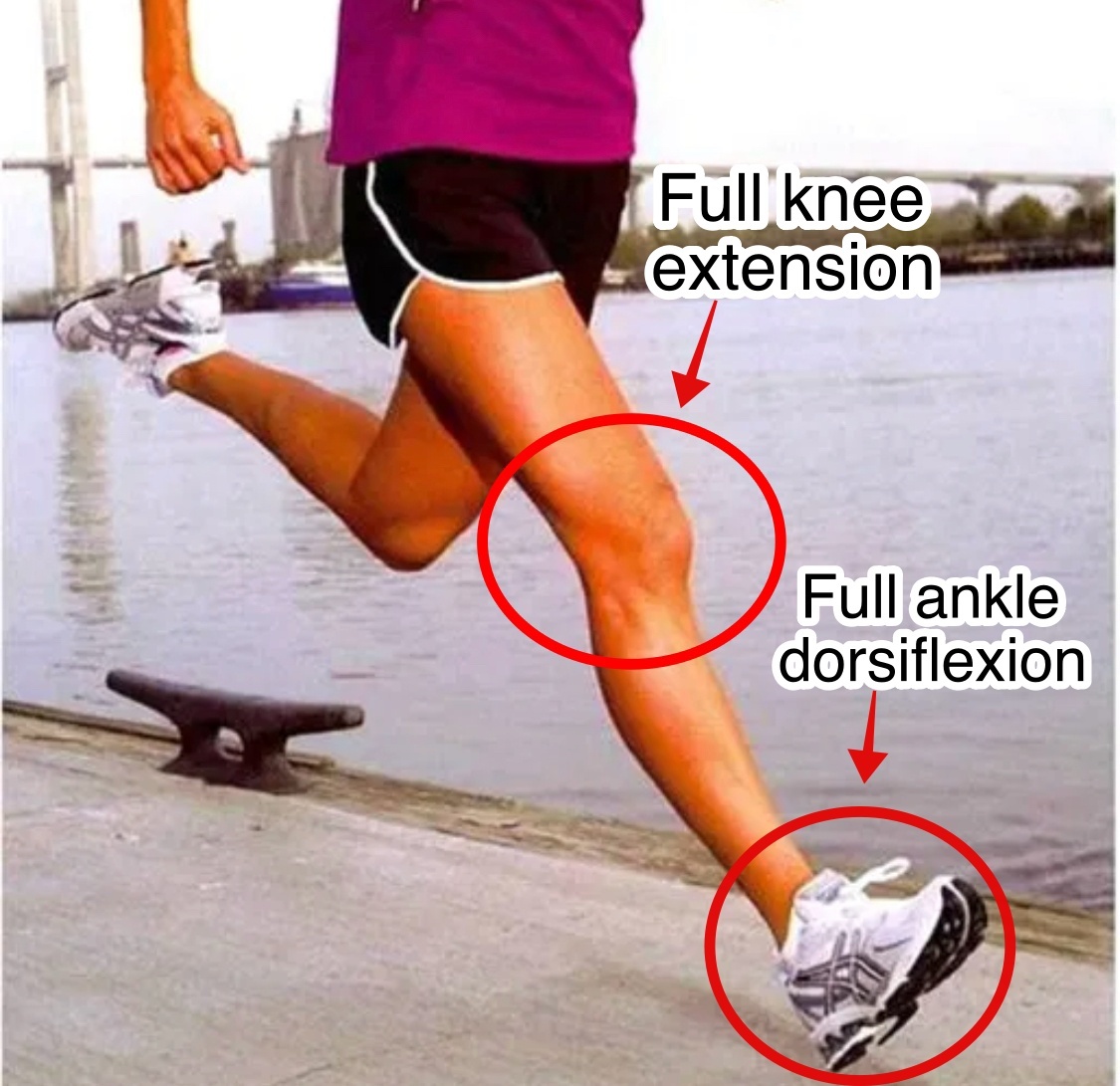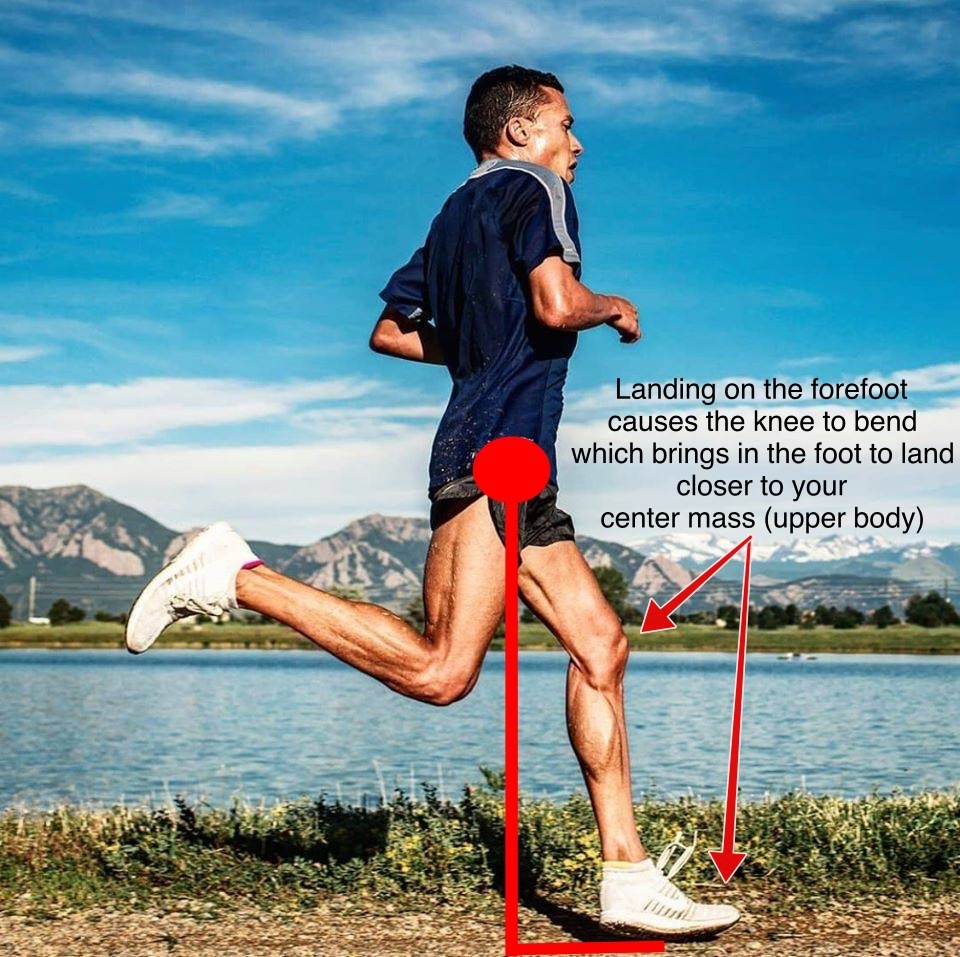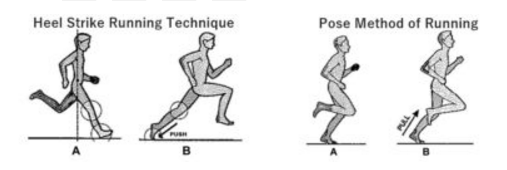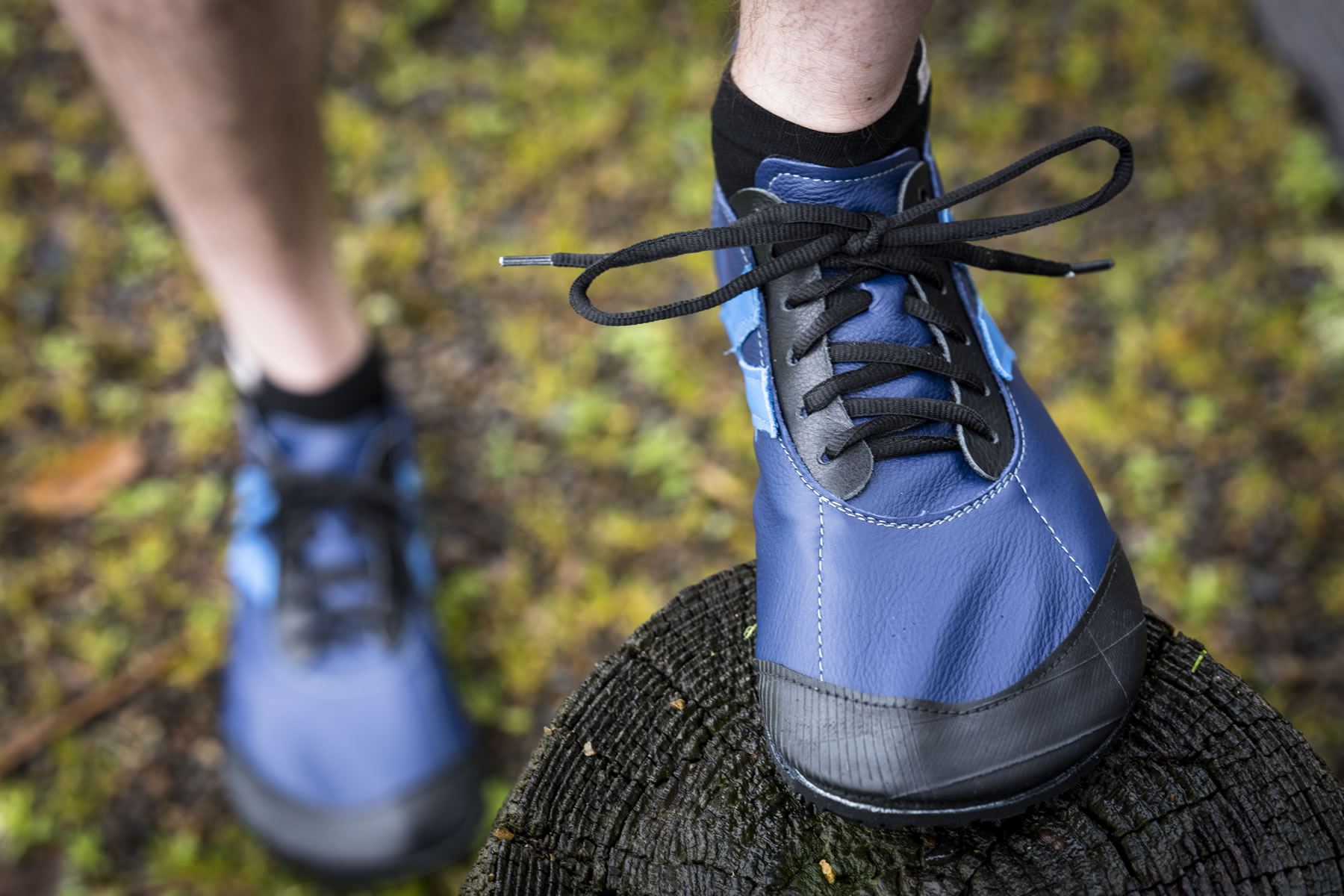One of the main reasons heel striking is so bad for running is its the only cause of the painful lower leg condition known as chronic exertional compartment syndrome (CECS).
The symptoms of running-related CECS includes throbbing cramps that radiate throughout the lower leg. The pain begins as soon as you start running and gets worse with running distance, but stops when running is stopped. The good news is forefoot running was found to be the solution and therefore, the prevention of CECS.
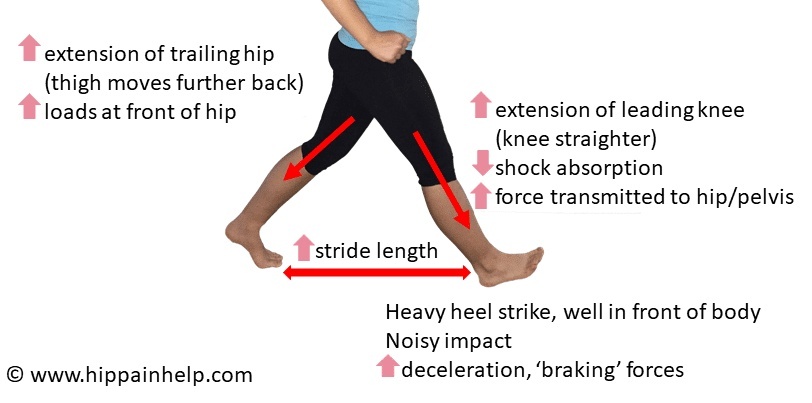

Research has countlessly confirmed that CECS only occurs in heel strike running because at heel strike, a prolonged brake force is produced, which means the stance leg comes to a crashing halt with the mass of the body for a prolonged period of time. This does not happen in forefoot running.
Its the prolonged, high-intensity brake force at heel strike that causes lower leg intramuscular compartment pressures to rise to pain-inducing levels. This can only be avoided by landing forefoot-first. Proof of this came from a sizeable body of evidence which found that Pose Running, a running style that advocates a non-heel strike landing while leaning forward, proved to be incredibly effective at fully resolving CECS!
Pose Running advises the following:
- non-heel strike landing
- leg swing that opens up more behind the body and therefore less in front
- subtle forward lean from the ankles, not from the hips
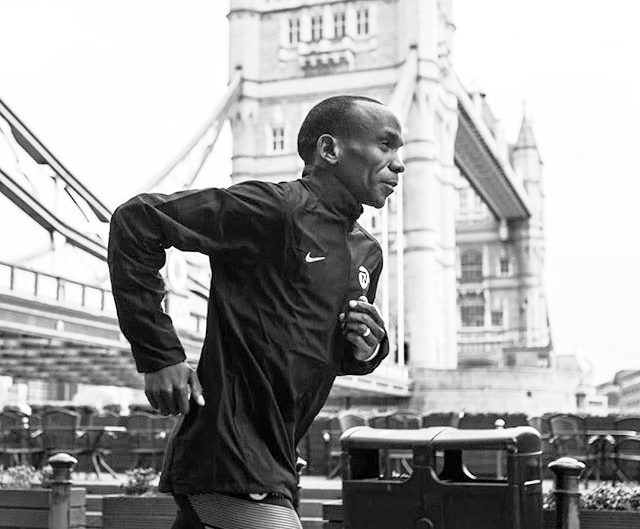
A 2012 study in the American Journal of Sports Medicine provided clear and credible explanations on how Pose Running is a reliable way to fully resolve and prevent CECS.
The study found that participants who replaced their heel strike running style with the Pose Running Technique showed a significant reduction in the vertical ground reaction force which directly led to a sudden drop in pain-triggering intra-compartmental pressure in the lower leg. This is why foot strike pattern really does matter in running because it’s the most influencing aspect on lower leg intramuscular pressure!
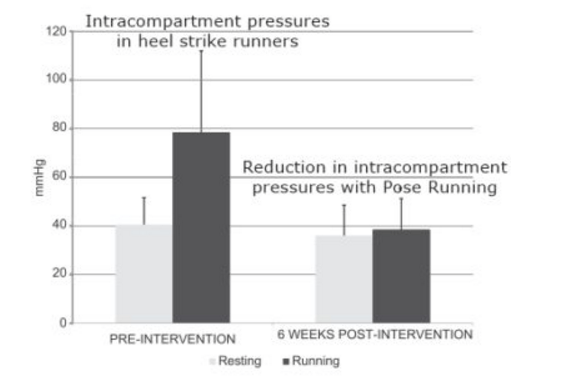
To give you a clearer sense of how Pose Running made the most positive difference in remedying CECS, the most optimistic part of the study was the Pose Running intervention led to improved run performance such that 2-mile run times were significantly faster compared with the pre-intervention values. Even better, running distance increased by 300%, and two participants even went on to complete two half-marathons shortly after!
Here’s more information about the exact Pose Running training method used in the study.
Researchers are convinced that lower leg anterior compartment pressures in running is directly influenced by foot strike pattern. This relation was clearly articulated in an 1984 study in the Journal of Bone & Joint Surgery which found that anterior compartment pressures significantly increased in healthy patients who used a heel strike landing during running.
More specifically, it was the full knee extension coupled with the full ankle dorsiflexion at heel strike (shown above) that resulted in increased lower leg anterior compartment pressures. The researchers reached this conclusion after finding that landing this way during running led to a constant escalation in eccentric activity in the lower leg which elevated anterior compartment pressures to an entirely new level causing pain to the related area.
The mechanical chain of events up the leg are the exact opposite in Pose Running (shown above), which prevents CECS-related mechanical strain because when you land farther away from your heel (less ankle dorsiflexion), and land on your forefoot, the knee automatically bends (less knee extension). This helps pull the foot in closer to land near your center of mass. Meanwhile, a slight forward tilt from the ankles does more to close the distance between your upper body and initial foot strike position, which in turn, reduces braking and boosts the forward movement of your center mass.
- Left, shows a heel strike landing which causes the ankle to lock out and the knee-joint to unbend, altogether causes a longer over-stride angle which leads to higher rates and magnitudes of braking. This landing arrangement is also the common cause of the compressive loads that trigger abnormal rises in lower leg intramuscular pressure. Right, shows the Pose Running Method which advocates a non-heel strike landing while leaning slightly forward from the ankles. This mechanical arrangement improves both initial foot strike and upper body positioning at touchdown which successfully prevented the impact that causes CECS.
The study adds yet another reason to avoid heel strike running and switch to forefoot running because it’s the most effective and reliable way to avoid damaging impact burdens altogether by simply correcting high impact mechanical defections that are only caused by heel strike running!
References:
Diebel et al. Forefoot running improved pain and disability associated with chronic exertional compartment syndrome. Amer J Sports Med, 2012; 40(5): 1060-67.
Gerahuni et al. Ankle and knee position as a factor modifying intracompartmental pressure in the human leg. J Bone Joint Surg Am, 1984;66(9):1415-1420.
Kirby, RL and McDermott, AG. Anterior tibial compartment pressures during running with rearfoot and forefoot landing styles. Arch Phys Med Rehabil, 1983; 64:262-99.
Romanov, N and Fletcher, G. Runners do not push off the ground but fall forward via a gravitational torque. Sports Biomech,3007; 6(3):434–52.
If you’ve enjoyed my blog post, you’ll love my YouTube Channel: here, where I discuss more on why forefoot running is the best way to run, and how running barefoot can make you a better shod (shoe) runner!
If you’d like, you can support Run Forefoot and help keep it going by making a donation in any amount of your choosing:

Or, you can also support Run Forefoot by shopping at the following top minimalist shoes brands, and be sure to bookmark the links:
Be Lenka: https://www.dpbolvw.net/click-7600968-14330828
FeelGrounds: https://www.feelgrounds.com/?p=RunForefoot
Xero Shoes: https://xeroshoes.com/go/Run_Forefoot
Iguaneye: https://www.iguaneye.com/?ref=8tfXVc92
Soft Star Shoes: https://shrsl.com/3mp1b
Wilding Shoes: https://bit.ly/3lIygQP
Earth Runners: https://earthrunners.com/?rfsn=6763579.f7f9c9
Vivobarefoot: https://shrsl.com/3kvih
Zappos: https://goo.gl/J1CeAd
Bretta Riches
BSc Neurobiology; MSc Biomechanics candidate, ultra minimalist runner & founder of RunForefoot. I was a heel striker, always injured. I was inspired by the great Tirunesh Dibaba to try forefoot running. Now, I'm injury free. This is why I launched Run Forefoot, to advocate the health & performance benefits of forefoot running and to raise awareness on the dangers of heel striking, because the world needs to know.
Latest posts by Bretta Riches (see all)
- Does Foot Strike Really Matter in Running? YES! - 17/04/2024
- Heel Lifts Increase Injury in Runners - 16/04/2024
- Are Minimalist Shoes Good for Seniors? YES! - 14/04/2024

